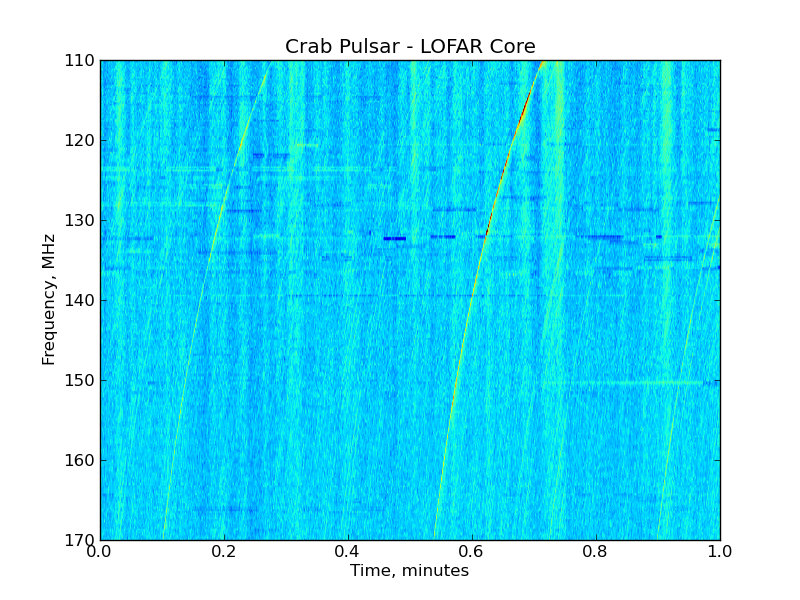Daily Image
07-05-2014The Scintillating Crab
| Submitter: | Richard Fallows |
| Description: | The Crab Nebula is a supernova remnant, and a strong radio source, which contains at its heart a pulsar which was amongst the first discovered, in 1968. As a compact source, it is known to scintillate ("twinkle") as the radio signal is scattered by density variations in (any of) the interstellar medium, the Sun's atmosphere (solar wind) and the Earth ionosphere. This is exactly the same effect as can be seen when stars twinkle due to density variations in the Earth's atmosphere and can be recorded as a rapid variation in the power received. The interstellar medium is also known to disperse the radio signals from pulsars making the lower frequencies of each pulse arrive later than the higher ones. This image is a dynamic spectrum of one minute of data from an observation of the Crab Nebula taken using the high-band antennas (HBA) of the coherently-added LOFAR core stations. The curved lines are bright pulses from the pulsar, dispersed by the interstellar medium. Two bright pulses are seen in this image, with many(*) fainter ones in between. Superposed are faint vertical stripes which are successive maxima in the total radio power received from the Crab, corresponding to scintillation due to the solar wind. These maxima occur simultaneously across the frequency band displayed here, indicating that the scintillation can be considered to be "weak", ie, the scintillation pattern seen is built up from interference between only the scattered waves and an unscattered component. The scintillation can be seen to increase in strength towards lower frequencies. (*) The Crab pulsar has a rotation period of 33 milliseconds, so there are about 30 pulses a second, i.e. about 1800 in the minute shown here. The reason that some pulses are much brighter than others is partly intrinsic to the pulsar, and partly interstellar scintillation. |
| Copyright: | Richard Fallows |
| Tweet |  |
